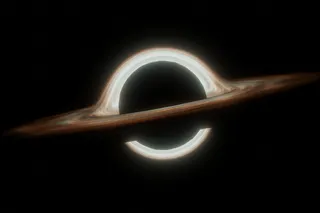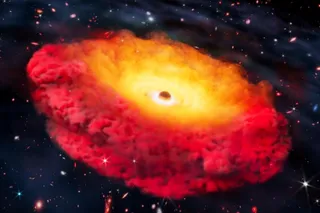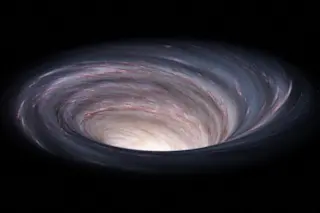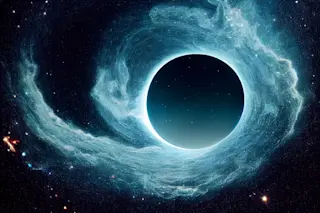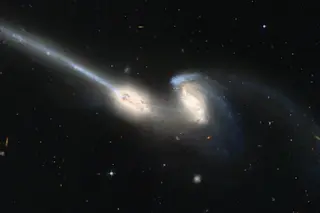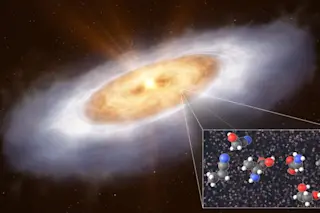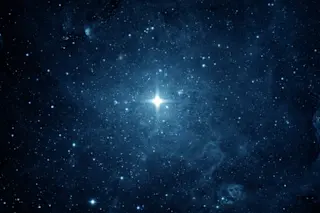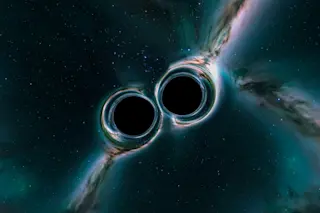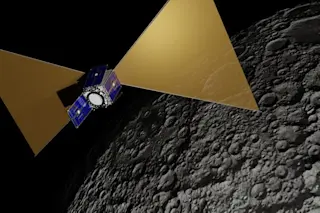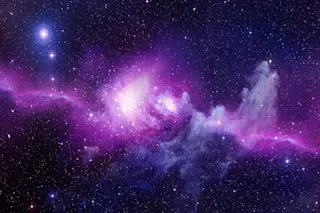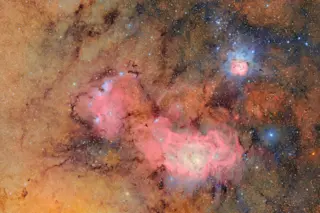There is a monster at the center of our galaxy: A black hole, known as Sagittarius A*, weighing 4.3 million times as the sun and measuring about 25 million kilometers (15 million miles) across. At present the monster is slumbering, betraying its presence only by a slight snore of radiation, but it was not always so calm. A new study using the Chandra X-ray Observatory has picked up echoes of past outbursts within the past few hundred years--moments when Sagittarius A* was wide awake, blazing a million times as brightly as it does today.
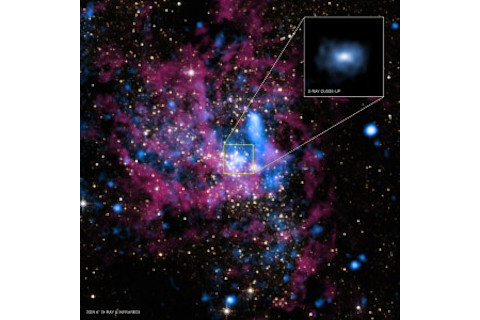
Sagittarius A* -- the giant black hole at the center of our galaxy -- appears dim in this composite image because very little material is falling into it. (Credit: NASA/UMass/D.Wang et al; NASA/STScI) The idea that a black hole can be bright seems paradoxical at first. In reality, the emission comes not from Sagittarius A* itself but from material about to be swallowed up by the hole. As gas spirals into the black hole it grows ferociously hot and gives off all forms of radiation, including energetic X-rays. The fact that Sagittarius A* is currently dim in X-rays indicates that the hole is currently on a starvation diet. (It's completely invisible in ordinary light, but that is due in large part to obscuring clouds that lie between there and here.) So what happens when it is feeding time at the galactic center? That's the question that Maïca Clavel of AstroParticule et Cosmologie in Paris, along with a group of collaborators, wanted to find out. The researchers sifted through 12 years of observations from the Chandra Observatory to examine the region around Sagittarius A* for subtle X-ray flickers. If the black hole flared up in the distant past, the radiation from that blast would move out through space like a ripple on a pond. As the radiation ripple hit nearby clouds of gas and dust it would illuminate them, creating a "light echo" of the original flare. Those echoes could in turn be visible from Earth today, long after the instigating event took place.
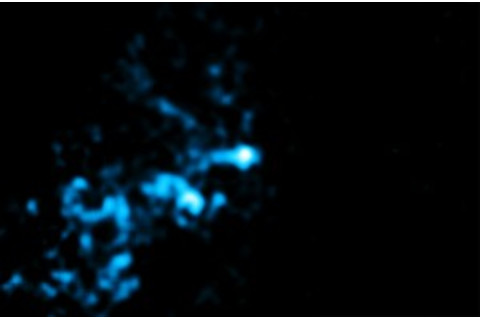
One snapshot of the light echoes from Sagittarius A*, seen in 2011, as a blast of radiation from the black hole illuminates surrounding clouds. Full sequence here. (Credit: NASA/CXC/APC/Université Paris Diderot/M.Clavel et al) And sure enough, that is exactly what Clavel and her team observed. In an upcoming paper, she report seeing not one but two different light echoes rippling out from Sagittarius A*. She interprets this as two distinct eruptions, each lasting a few years. Based on the relative geometry of the black hole and the echoes, she estimates that these paired eruptions took place within the last few centuries, but she cannot be more precise. During that active phase, the black hole must have been shining at least a million times as energetically as does the sun. As for why Sagittarius A* flared up, there are several plausible explanations. All of them are violent and unsettling. The black hole might have chewed up a planet; ripped off the outer layers of a star; caused a pair of stars to collide and then sucked up the debris; or it might have plowed into local clumps of gas and swept away to oblivion. That last explanation is especially intriguing because there is a clump of gas called G2, about three times the mass of the Earth, that is swinging perilously close to Sagittarius A* right now, making its closest approach early next year. Already the intense gravity of the black hole has squeezed and stretched out the gas cloud like a piece of taffy. The leading part of the strand has already looped around the hole. When the main part of G2 grazes by next year, some of it might get sucked in.
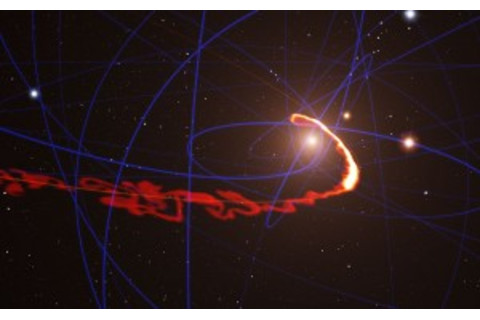
Computer simulation of gas cloud G2 being stretched and ripped apart by the black hole at the center of our galaxy. Blue lines denote the paths of nearby stars. (Credit: ESO/S. Gillessen/MPE/Marc Schartmann) Will fireworks ensure? Astronomer are watching very closely, not only with space telescopes like Chandra but also with a novel instrument called the Event Horizon Telescope, which links together instruments around the world to create, in effect, a single radio receiver the size of the whole planet. An instrument that size has the power to resolve details as small as the event horizon of Sagittarius A*, the black hole's point of no return. Seriously, we live in amazing times. Follow me on Twitter: @coreyspowell


